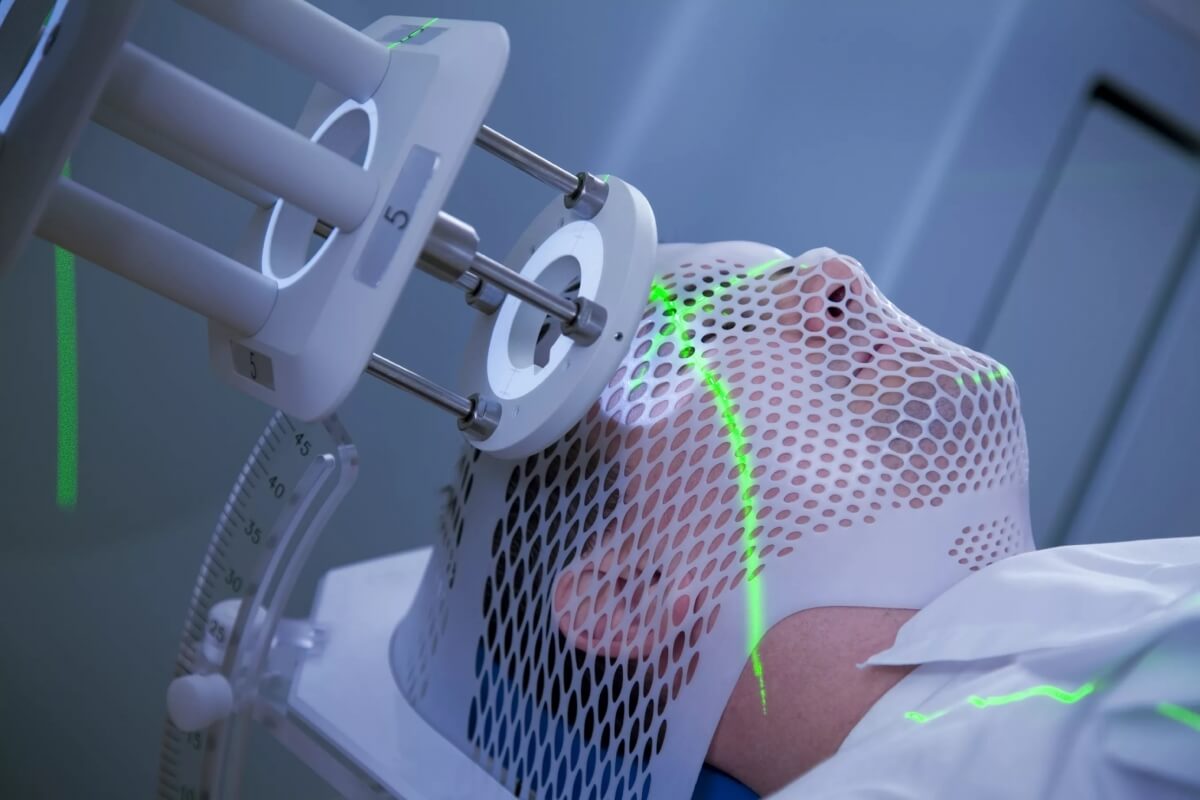
Radiotherapy, also called radiation therapy, is a cancer treatment that uses high doses of radiation to kill cancer cells and shrink tumors. It works by damaging the DNA inside cancer cells, making it impossible for them to continue growing and dividing. Radiation damages cancer cell DNA but generally does not harm normal cells as they can better repair any DNA damage.
External Beam Radiation therapy
External beam radiation therapy, also known as external radiation therapy, is the most common type of radiation treatment for cancer. It uses a machine outside the body called a linear accelerator to aim high-energy beams of radiation at the cancer site. During treatment sessions, which usually last just a few minutes, the patient lies on a treatment couch and the radiation beams are targeted at the area of the body where cancer cells are found. External beam radiation therapy can be delivered in short daily doses over several weeks or in fewer, larger doses known as stereotactic body radiation therapy. Stereotactic means targeting radiation with extremely precise accuracy using 3D imaging techniques and computer planning.
Brachytherapy
Brachytherapy, also known as internal radiation therapy, involves placing radioactive material directly inside the body as close as possible to the cancer site. For some cancers, like cervical, prostate and breast cancer, brachytherapy delivers a higher dose of radiation more directly to the tumor while limiting the dose to nearby normal tissues. During brachytherapy treatment, thin tubes or seeds containing radioactive material are placed surgically into or near the tumor site. The radiation penetrates a short distance so the dose falls off rapidly with distance, allowing a higher dose to be used safely. Brachytherapy can be given as a single dose or multiple smaller doses over time.
Radiosurgery
Radiosurgery uses customized conformal radiation treatment techniques to safely deliver a precise high dose of radiation to a tumor region. It helps destroy tumours and abnormal blood vessels while sparing healthy tissues. Stereotactic radiosurgery uses advanced imaging and computer planning to precisely direct multiple radiation beams to intersect at the tumor site. This allows delivery of an ablative radiation dose in just one or a few treatments. Radiosurgery is often used to treat brain tumors, spinal tumours and other conditions when surgery may be too high-risk or impossible.
Types of Radiation Used
Different types of ionizing radiation are used in radiation therapy treatments including X-rays, gamma rays and other particle radiations. Linear accelerators are commonly used to generate high-energy X-rays while cobalt-60 units produce gamma rays. Protons or other particle beams may be used in certain advanced treatments. The type of radiation used depends on the equipment available, the characteristics of the cancer being treated and other factors. In general, all types of ionizing radiation work in a similar way by breaking chemical bonds in DNA, especially in fast-dividing cancer cells.
Side Effects of Radiation therapy
While radiation kills cancer cells, it can also affect nearby healthy cells and tissues. Common short-term side effects occur during or soon after treatment and may include fatigue, skin irritation or reddening in treated areas, nausea or loss of appetite. Hair loss can occur if treatments include the scalp. More serious long-term side effects are less common but are caused by radiation damage to healthy cells and tissues near the treatment area over many years. These may include lung fibrosis after chest radiation, heart problems after lung or breasts radiation, fertility problems, bone or muscle weakness or other organ damage. Side effects depend on treatment dose, area treated and individual patient factors. Careful planning and recent technological advances aim to reduce side effects while still effectively treating cancer.
New Technological Advances
Continuous improvements in technology and treatment techniques allow radiation therapy to deliver higher and more precisely targeted doses of radiation to cancer sites while avoiding healthy tissues. Advanced imaging like CT, MRI and PET scans aid precise computerized 3D planning. Intensity-modulated radiation therapy (IMRT) and volumetric arc therapy (VMAT) deliver radiation from many angles through dynamically moving delivery systems, customizing treatment profiles. Proton beam therapy may benefit certain cancers by depositing most radiation dose within the tumor with minimal entry and exit doses. Particle therapy is still limited but offers promise for certain hard to treat cancers. Robotic treatments automate precise daily patient positioning for accuracy. Nanotechnology may enable targeted drug delivery using radiation-activated nanoparticles. New technologies allow personalized treatments tailored for each patient's cancer type and anatomy for maximum efficacy and safety.
In summary, radiotherapy is an important cancer treatment modality used either alone or combined with other treatments to cure or control many different cancer types. Technological advances are constantly improving radiation therapy efficacy and safety. With careful treatment planning and delivery, modern radiation therapy allows targeted high-dose treatments while sparing surrounding normal tissues and minimizing side effects. Combined with advances in imaging, computing and treatment techniques, radiation therapy continues to evolve as an effective option for many cancer patients.
























